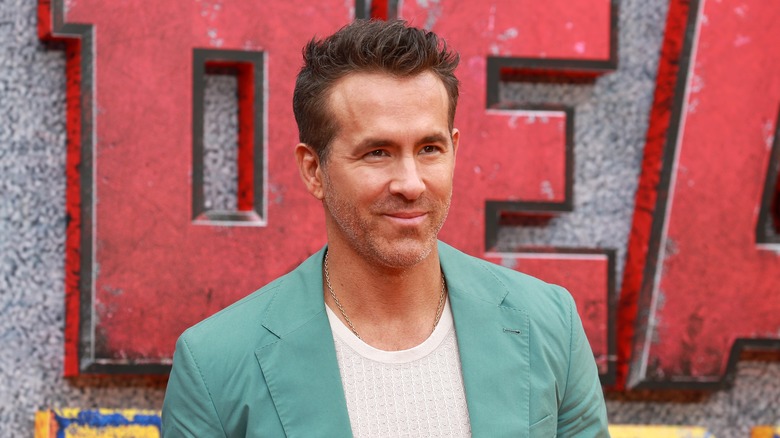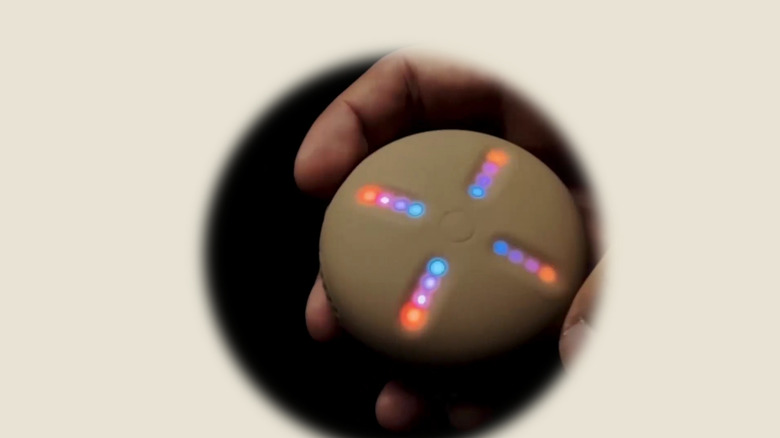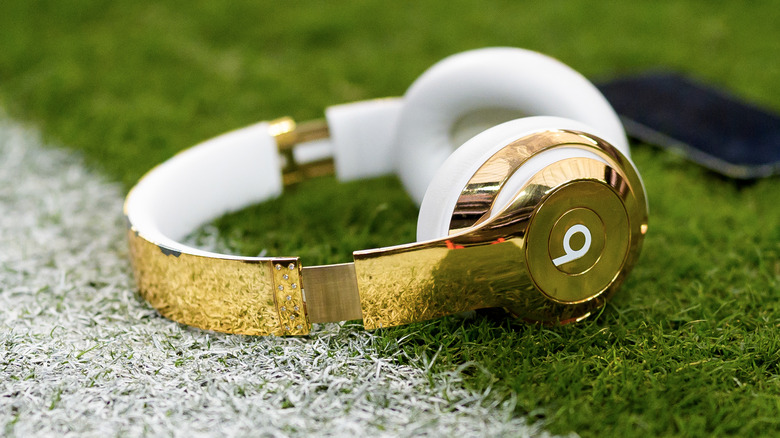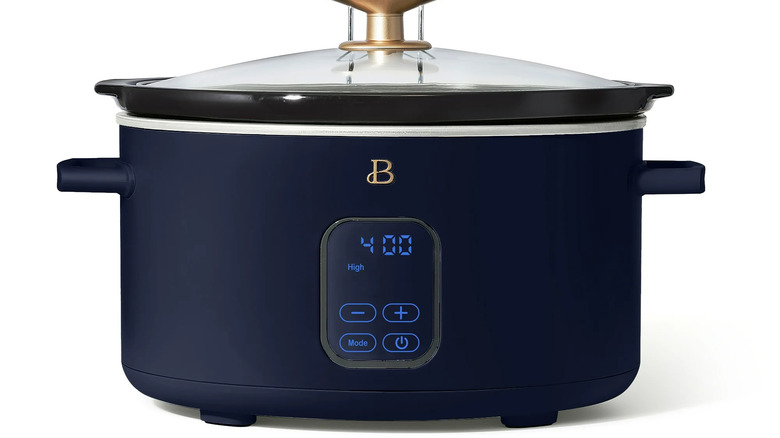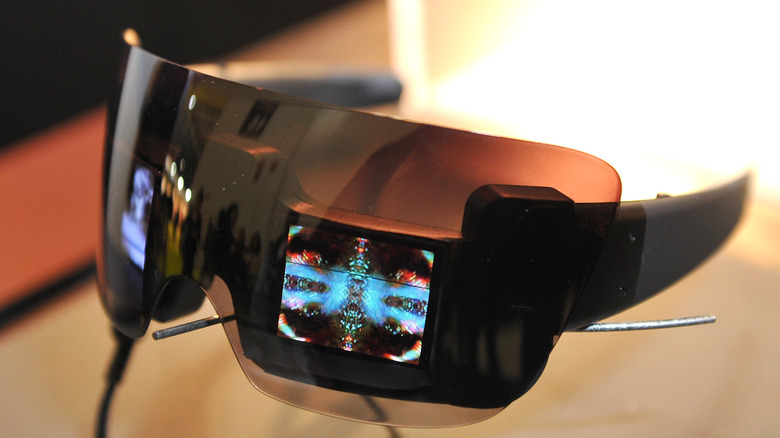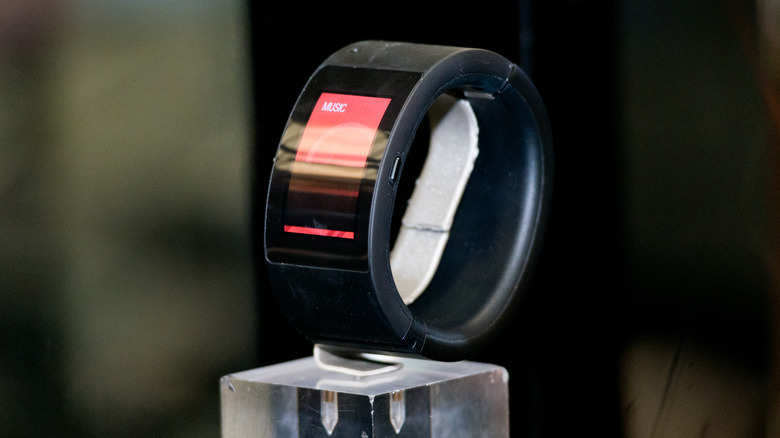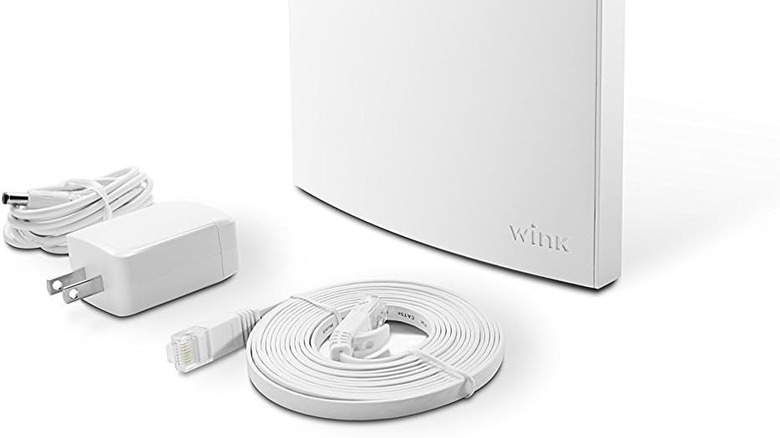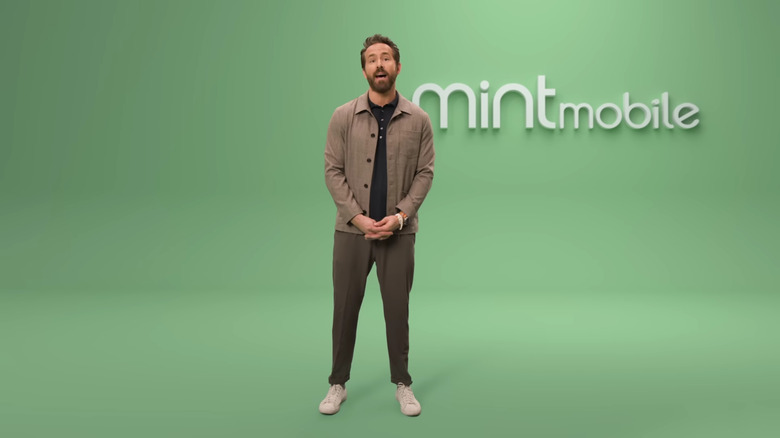7 Of The Most Interesting Celebrity Tech Products Ever Made
We may receive a commission on purchases made from links.
Celebrities have captured our hearts and minds, so it was probably inevitable they'd come for our wallets too. Branching out into product design and marketing is a logical next step for the most popular people in our capitalist society, but while most are content with owning a liquor company, others have reached further. Those ventures have brought varying degrees of success, even leading some celebs to billionaire status. Some celebrity products have gone down as all-time greats — think Air Jordans — while others were so wildly out of touch and useless that they were mercilessly mocked before being entirely forgotten.
As tech products have come to define our lives, more celebrities have tried their hands at being the next Steve Jobs. We're going to take a look at some of the most interesting celebrity tech, but first, some clarification. Oftentimes, celebrities license their names or likenesses to brands, which then slap them on a product. That's how you wind up with Olivia Rodrigo-branded Sony earbuds. We will instead be looking at products designed or at least owned by the celebrities behind them. From glasses that make you go gaga to gorgeous kitchen gadgets and glamorous glitterati, here are seven celebrity tech products that may or may not be worth your money but are nonetheless novel enough to gawk over.
Kanye West's bizarre DONDA Stem Player
Kanye West has had many ideas over the course of his career, some winners, some not. Among the misguided conceptions was his foray into the tech industry with the DONDA Stem Player, a device that purported to let users remix their favorite songs on the go. Shaped like a space ship and made of rubber, the device was meant to separate a song into its variable tracks, allowing users to play each instrumental layer back at will.
Though a tech product from the "Jesus Walks" rapper had been rumored as early as 2012, West launched the Stem Player with his 2021 album, "Donda," in collaboration with the British technology firm Kano Computing. He had originally planned for the follow-up album, "Donda 2," to launch exclusively through the Stem Player, but that album failed to materialize.
The player itself cost $200 upon release, and it wasn't quite what West promised. The actual splitting of musical stems had to be performed within a web app on the user's computer, then synced over to the Stem Player. Once there, they could be manipulated during playback by using the touch capacitive sliders on the Player's dome-like surface. The device was housed in a case that resembled a large ring box. Reviews of the device from the usual tech outlets ranged from puzzled to semi-satisfied, with reviewers puzzled by its small storage capacity, lack of a display, and according to PC Mag, its "unpleasant fleshy texture." Engadget summed things up nicely by writing, "It looks kinda like a sex toy."
Dr. Dre's bass-pumping Beats
The product that turned hip-hop legend Dr. Dre into a near billionaire wasn't his music, but his personal line of headphones. There was a period during the mid-2000s to 2010s when the candy-coated cans were an inescapable sight, worn by everyone from chart-topping musicians to all-star sports players due to a ceaseless spending spree on sponsorships. It turns out that Dre identified a massive gap in the audio market, as aesthetics were an afterthought for headphones manufacturers. The flashy designs of Beats headphones spoke to people who cared more about look than sound, which turned out to be the vast majority of consumers.
Shortly into the company's lifespan, HTC bought a controlling share in Beats, but that was small potatoes compared to what was in store. Eventually, Apple came calling, turning Dre into "the first billionaire in hip hop" when it scooped his company up for a jaw-dropping $3.2 billion. It was the largest acquisition in history for the Cupertino tech giant. In fact, it was partially in response to Apple's plain, white earbuds that Dre and record executive Jimmy Iovine conceived of Beats. Those plastic earbuds were lackluster, and Dre reportedly told Iovine, "Man, it's one thing that people steal my music. It's another thing to destroy the feeling of what I've worked on."
However, while they certainly blew Apple's free iPod buds out of the water, Beats were a no-go for audiophiles, who frequently lambasted the overly bass-centric sound they emphasized, declaring them a triumph of style over substance. Though some newer Beats products have been better reviewed, that perception persisted among sound snobs.
Drew Barrymore's Beautiful kitchen gadgets
After a lifetime of fame as a movie star and now talk show host, Drew Barrymore joined the ranks of fellow celebs like Gwyneth Paltrow and Kate Hudson in launching a lifestyle brand: Beautiful. Although the name suggests skincare or other cosmetics, Barrymore's company makes kitchen gadgets ranging from air fryers to popcorn makers.
Among the devices in Beautiful's range of kitchen tech are air fryers, coffee makers, slow cookers, mixers, toasters ... you get the picture. People seem to like these products, at least based on the Walmart reviews — they each have at least four stars, with most reaching four and a half. The slow cooker seems especially popular, having garnered over 9,300 reviews. Its owners seem rather defensive of it, with one TikTok creator who goes by @mississippi_kween defending its honor to her nearly 2 million followers after another creator accused the crockpot of getting dangerously hot. Meanwhile, Wired gave Beautiful's electric kettle a respectable 8/10.
The products all have the same aesthetic, which is to say they give off a pastel-tinged minimalism that has just enough color to pop against the backdrop of trendy greyscale that typifies the going vogue for kitchen design. They look quite nice in a calculatedly middle of the road way. All in all, Barrymore's cooking gadgets seem to be among the more successful celebrity tech ventures.
Lady Gaga's polarizing Polaroid camera glasses
Leave it to Lady Gaga to invent the weirdest pair of glasses in the world. The "Bad Romance" singer took to the stage at CES 2011 in Las Vegas to unveil the Polaroid GL20 Camera Glasses, a massive pair of visor-style specs that took pictures with their built-in cameras. They then displayed those pictures on a pair of outward-facing LCD screens. In other words, they were the exact opposite of VR glasses.
A year prior to the launch of the GL20 Camera Glasses, Gaga had been hired as Polaroid's creative director, and they were her first launch under the "Grey Label by Haus of Gaga" brand. However, no little monsters would ever get to display these wearable displays on their face, as the glasses never made it to market. The idea, however, is interesting. Projecting back to the world a photo of how you perceive it seems in keeping with the artistic stance that has sustained Lady Gaga's vision over the years. As one of the preeminent artists of the social media age, she has always appeared fascinated with public perception filtered through technology, a fixation demonstrated by her many public stunts (who can forget the meat dress, or the time she painted an eyeball on her eyelid).
Had they gone to market, it's unlikely that Gaga's glasses would have sold well, since the general public wasn't a fan of face-mounted cameras. A few years later, Google attempted to launch Google Glass, another product revolving around face cameras that was loved by tech enthusiasts but so despised by the public that people assaulted its wearers.
will.i.am's re-PULS-ive wristwear
As the leading man of the Black-Eyed Peas, will.i.am has a lot of concerns. Will he ever truly understand Fergie? Will he ever live down the original lyrics to "Let's Get It Started"? Will he am? But when he's not busy pondering those questions, the chart-topping musician is busy inventing the technology of tomorrow ... or at least of the not quite today. His PULS smartwatch is perhaps the most unique on this list. It also has the designation of "worst smartwatch I've worn all year" by The Verge's Dan Sifert, who reviewed it in 2014. As the artist himself put it in a voiceover for an ad, he wanted his wristwear to be worn by "the oddballs, the bizarre, the weirdos, the freaks." That's just as well, since the average person certainly wasn't in a rush to get their hands on it.
The PULS was a smartwatch band with a portrait-oriented rectangular display and a rubber strap that ran a barebones version of Android. Okay, nothing special, but not a bad start. Unfortunately, the display was grainy, the strap stiff, and most perplexingly of all, it didn't run WearOS but rather a custom Android skin. While it could text and accomplish several other basic functions, multiple reviews agreed that it was uncomfortable, hard to use, and had a barely functional screen. "So bad I'm actually kind of impressed" was the conclusion arrived at by Gizmodo's Ashley Feinberg.
will.i.am's Wink smart home
After the failure of the PULS, will.i.am continued to launch tech products, including a second smartwatch and a backpack with speakers in it, neither of which sparked much interest nor are they interesting enough to cover here. But the entertainer had a feeling he was destined as a Dr. Dre-style tech mogul, so he started up his own technology investment firm called i.am+. This time, rather than plumb the depths of his own genius, will.i.am let the products come to him ... which is how he wound up the owner of a smart home platform originally created by General Electric.
Wink, the smart home platform in question, was originally made by the incubator Quirky in collaboration with General Electric, which was looking to make major plays in the smart home market. After being spun off from Quirky in 2015 due to the company's financial woes (it would soon go bankrupt), Wink was purchased by Flex. By 2016, the company bragged 1.3 million devices on its network, but it was sold again in 2017 to a certain Black Eyed Pea. i.am+ bought Wink away for nearly $59 million. This time, will.i.am had a successful product on his hands, and one that didn't rely on his cultural cachet to cash in on.
As owner of Wink, will.i.am's first move was to start charging a subscription for the previously free service. Users who had already invested in the platform by purchasing compatible smart devices were given about two months to cough up or be locked out. will.i.am didn't meet them halfway. Then, in January 2021, Wink suffered an unexplained nine-day outage, leaving even its paying users out in the cold.
Ryan Reynolds' Mint flavored mobile phone service
You know Ryan Reynolds best as the scarred up face of Deadpool, or as the protagonist of several soulless Netflix Original action movies, but you might not know about his businesses. When he's not busy boosting box office ratings for flagging cinematic universes as he recently did in "Deadpool & Wolverine," 2010's sexiest man alive is busy investing his Hollywood bucks into ventures that make him far more money than any movie could hope to. One of his most successful yet was the telecommunications service Mint Mobile, a budget prepaid cellular service not unlike Virgin Mobile, Boost Mobile, or other pay-as-you-go phone plans.
Reynolds bought a 25% stake in the company in 2019, and is largely credited with steering it to even greater success. Using the same brand of comedy that turned Deadpool into a household name — with only slightly less profanity — Reynolds starred in creative ads for the phone service that greatly raised its profile. According to Reynolds, he bought into a phone company because he saw a gap in the market for more affordable phone plans, writing in a statement, "I'm excited to champion a more practical approach to the most essential technology." In May of 2024, Reynolds sold Mint Mobile to T-Mobile in a $1.3 billion deal that made him a reported $300 million. The acquisition made plenty of sense since Mint Mobile was already operating on a leased portion of T-Mobile's network. Reynolds stayed on as a lead creative for the brand.
